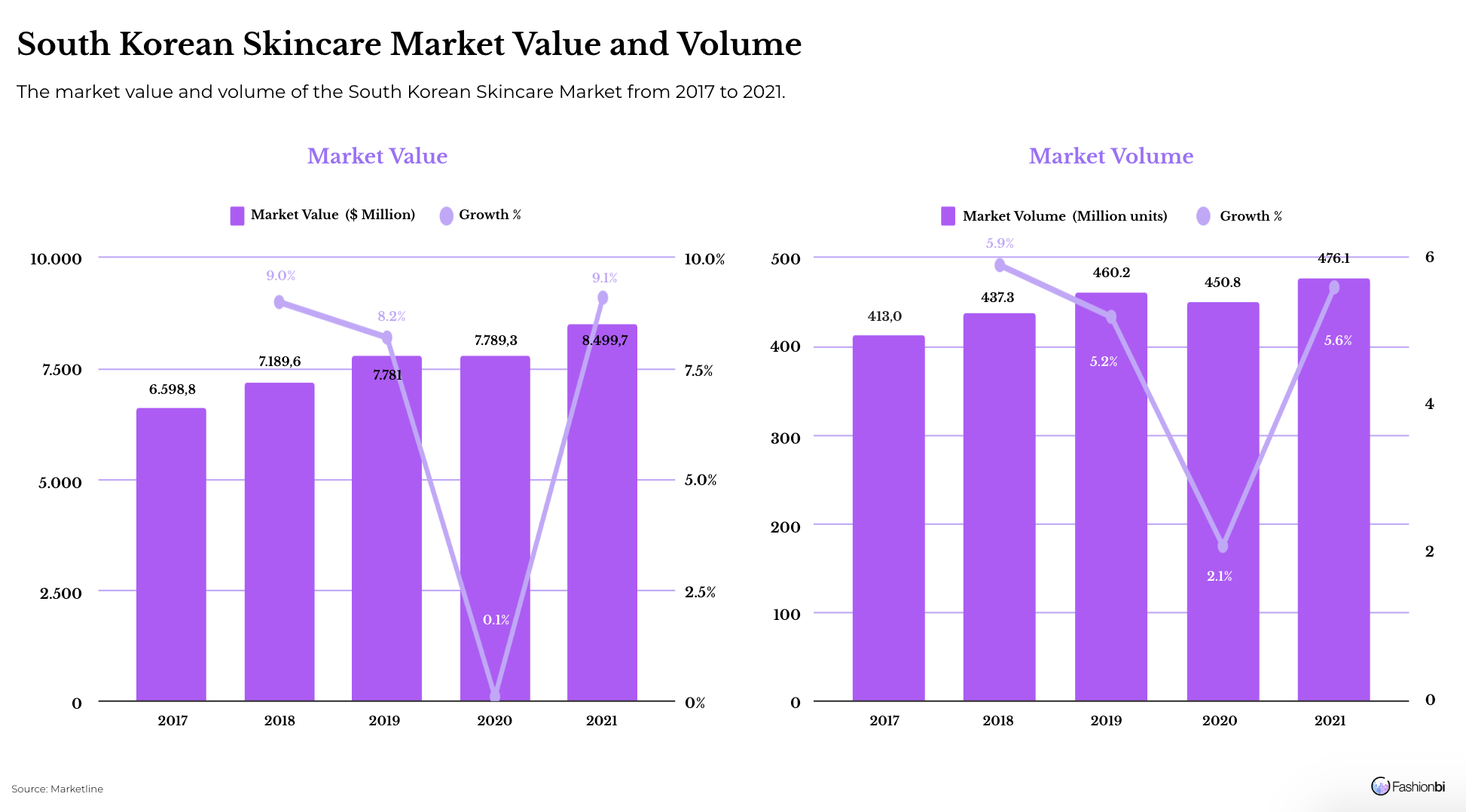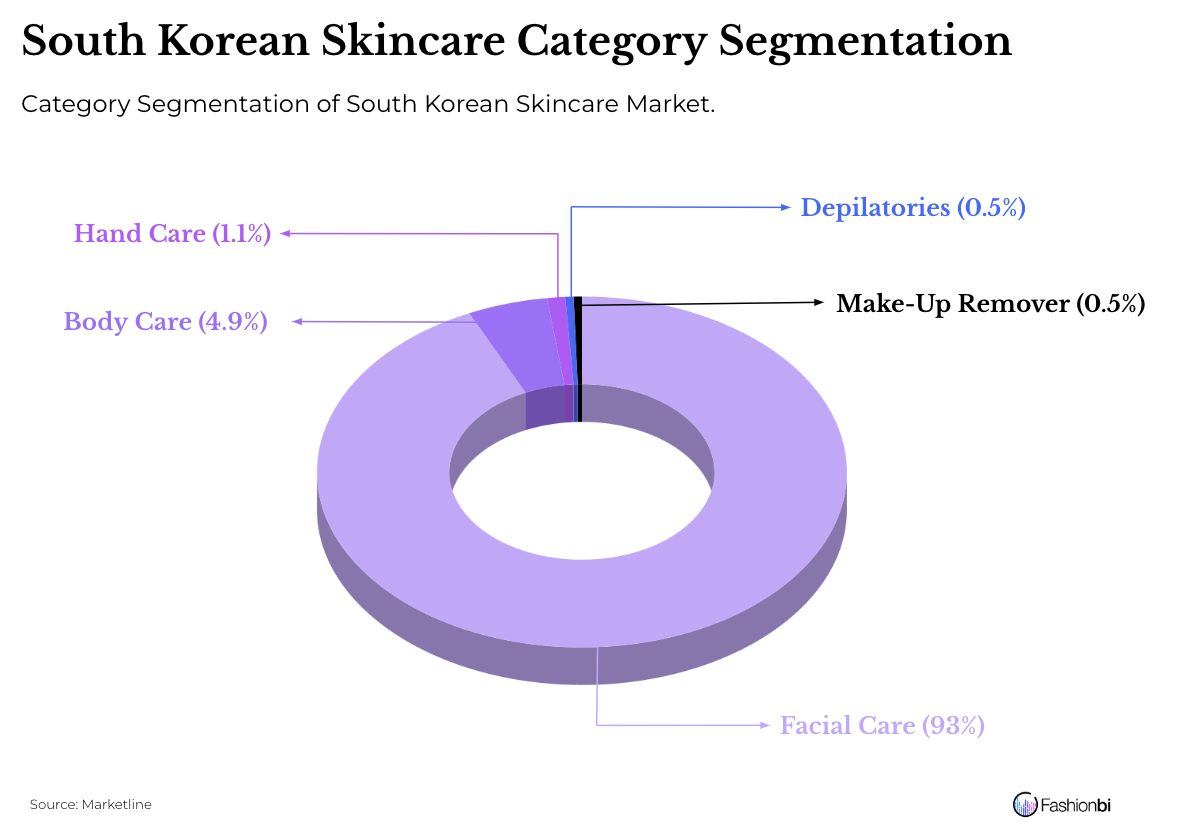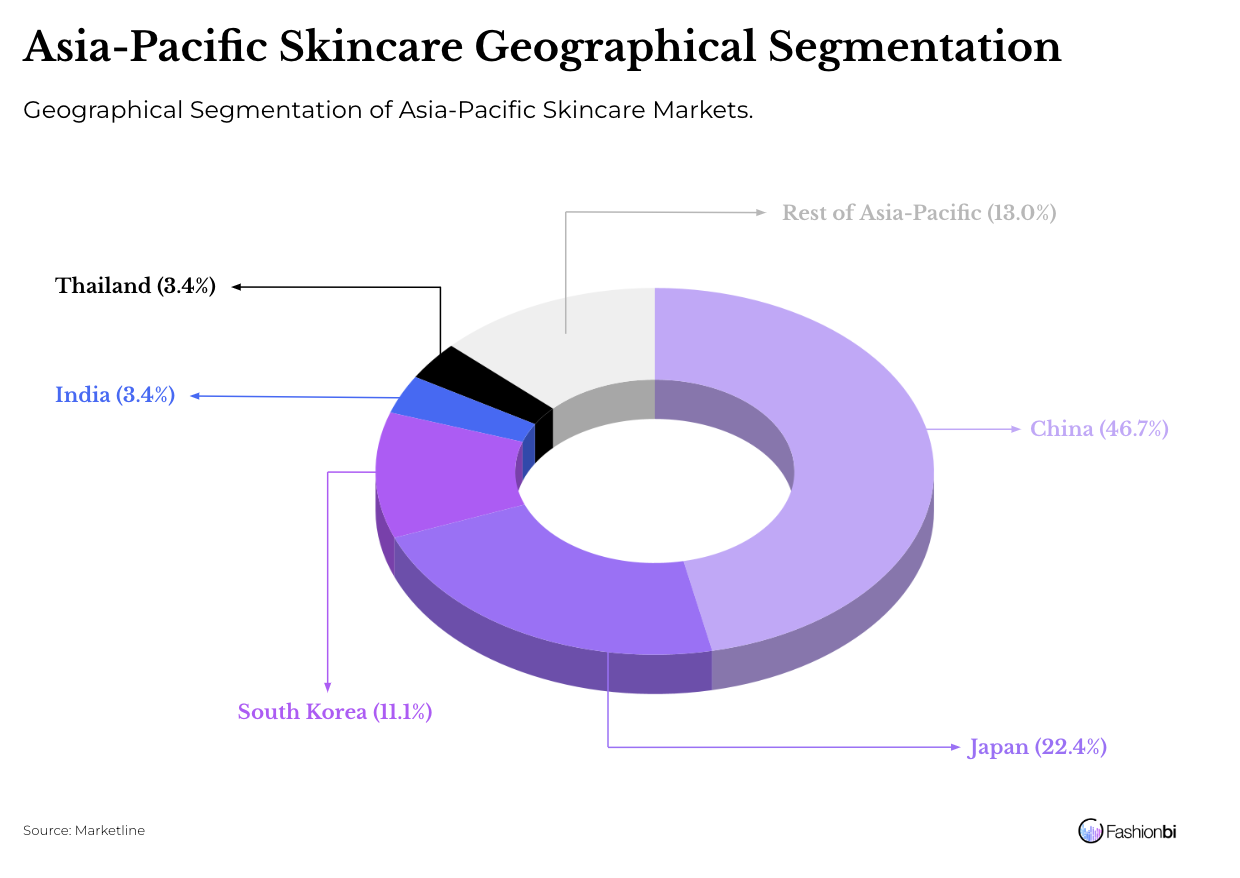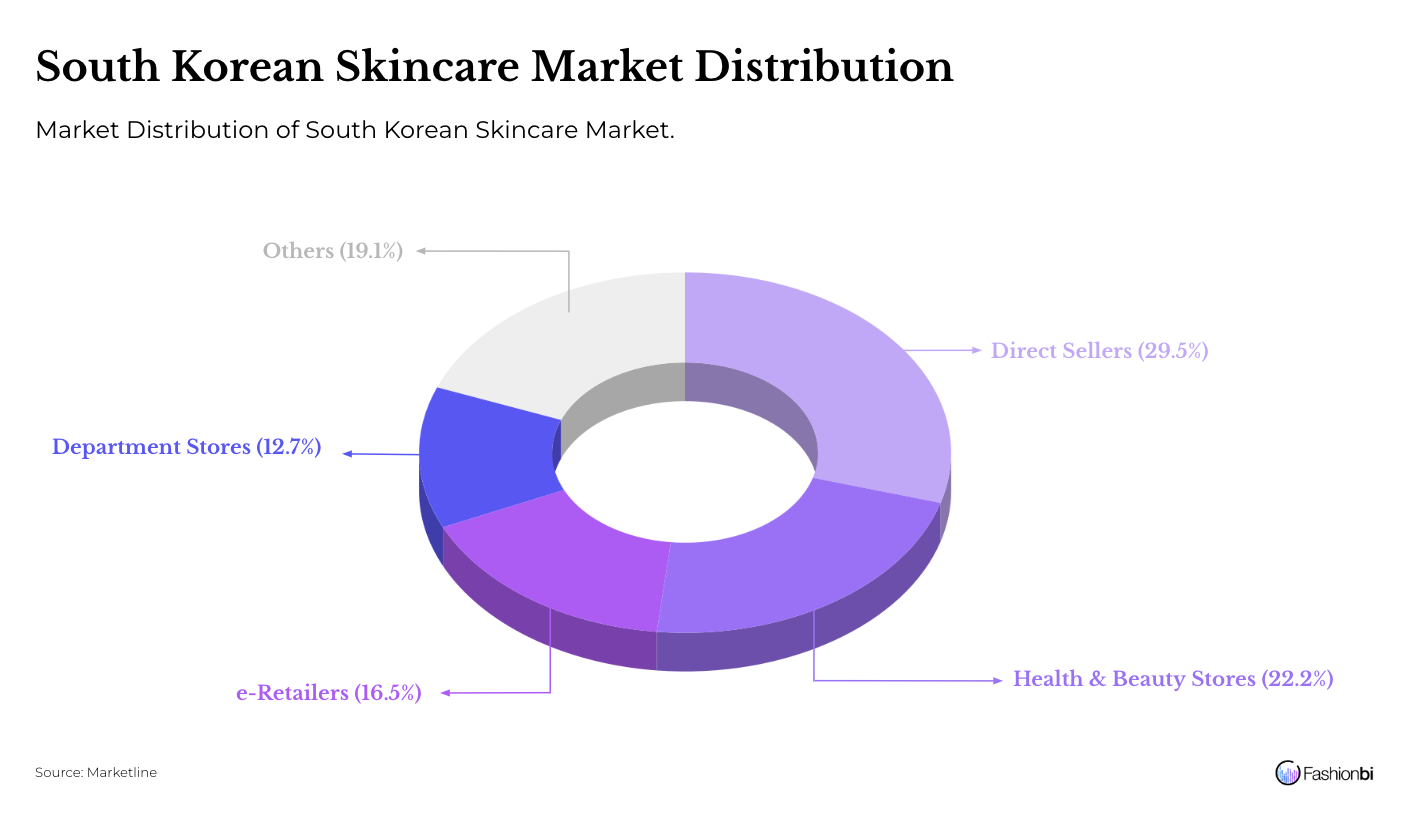In South Korea, the skincare market has seen unexpected growth during the years 2016-2021. The appreciative economic states and the escalating spending power of consumers were the major contributors to the market’s growth. However, the market is estimated to face a decline in growth pace from 2022 to 2026.
The total turnover of the South Korean skincare market is $8.499,7 million in 2021 with a Compound Annual Growth Rate of 7.2% through 2016-2021. Whereas the Indian and Thai markets had a CAGR of 7.7% and 4.3% respectively with total revenue of $2.596,3 million and $2.571,7 million in 2021.
The Market consumption volume is 4.2% in the years 2016-2021 and headed 0.5 billion units in 2021. It is predicted to increase to 0.6 billion by the end of 2026 with a CAGR of 3.5% in 2022-2026.
Market Value and Volume
The Market Value and Market Volume have risen by 9.1% and 5.6% respectively from 2017 to 2021. The Market value is $8.499,7 million in 2021, with a CAGR of 6.5%. On the other hand, the Market Volume is 476.1 million units in 2021 with a 3.6% of CAGR.
Market Segmentation
Facial care is the segment with a larger market share and consumer traffic. The total revenue of the facial care segment was $7.9 billion in 2021, garnering around 93% of the overall market value. The body care segment earned $415,6 million in 2021, an aggregate market value of 4.9%.
In 2021, South Korea held 11.1% of the Asia-Pacific skincare market share, earning 3rd position in the Asia-Pacific geography segmentation. The first place is secured by China with 46.7% market share (total revenue of $35.661 million), followed by Japan with 22.4% (total revenue of $17.143,7 million).
In market distribution, Direct Sellers took the maximum amount of overall market share, estimating 29.5% of the market value. Health & Beauty Stores account for 22.2% of the market share. The e-Retaliers, Department Stores, and others follow them with 16.5%, 12.7%, and 19.1% of the market share respectively.
Market’s Future Forecast
The market is predicted to have a 5.6% CAGR in the period 2021-2026 with a revenue of $11.178,8 million at the end of 2026. In contrast, the Indian and Thai market is expected to reach $4.224,9 million and $3.103,1 million in 2026 with a CAGR of 10.2% and 3.8%.
The South Korean skincare market is looking forward to having a volume increase of 18.5% from 476,1 million units in 2021 to 564,2 million units in 2026 and a CAGR of 3.5%.
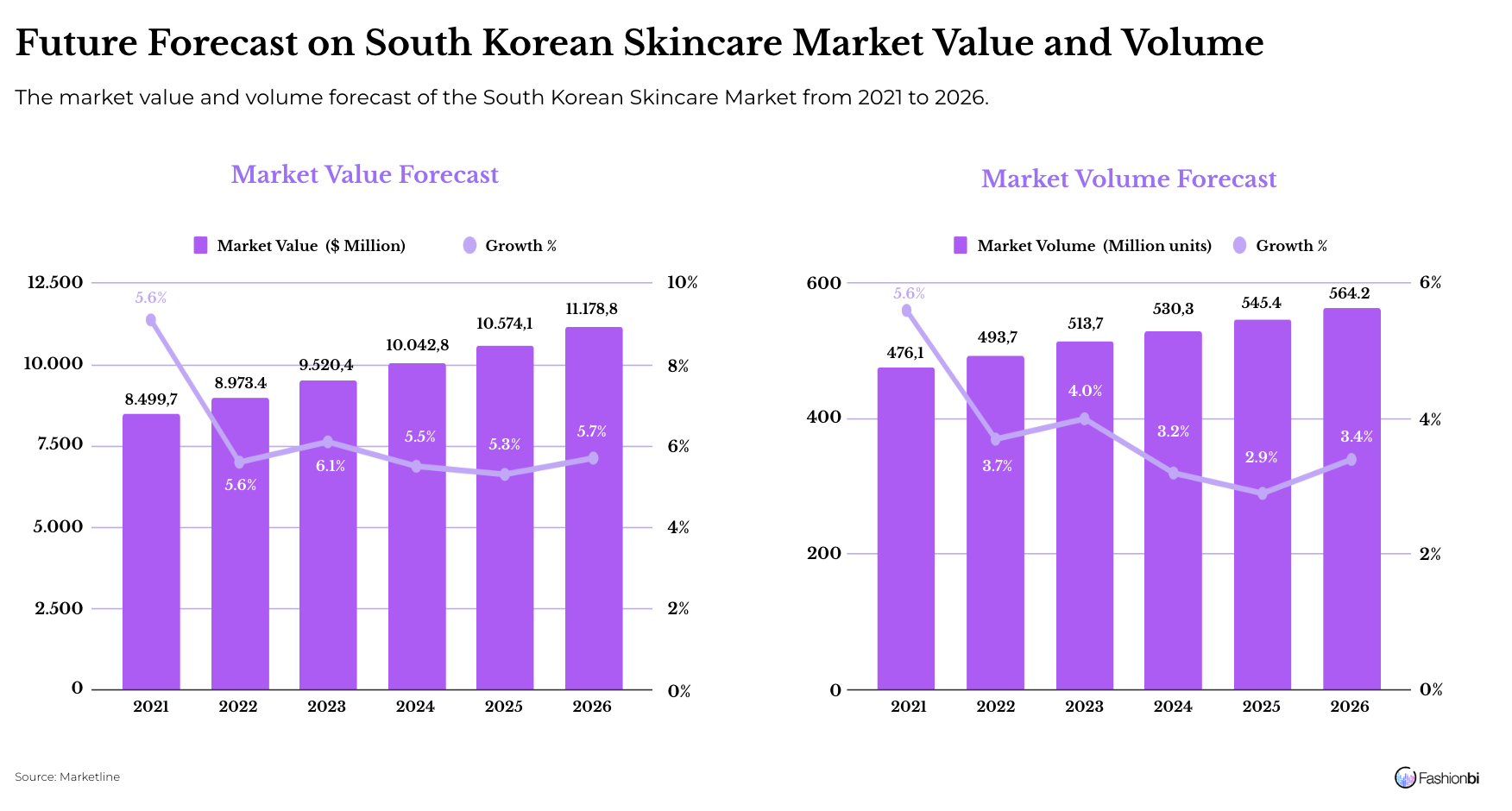
Top South Korean Skincare brands
Laneige
Laneige was founded by Amore Pacific Corporation in 1994 in Seoul, South Korea. The term refers to ‘fresh snow’ in French. The brand offers various products including face moisturiser, essence, toner, mask, and many more. The star product of this brand is its sleeping lip mask, which bagged one Best of Beauty Award and three Readers’ Choice.
Dr. Jart+
Founded in 2004, DrJart is a cut-down form of “Doctors Joins Art.” It acts as a median between dermatological science and art. The Estée Lauder Companies Inc. is the new owner of this Korean brand. Cicapair™ Tiger Grass Color Correcting Treatment Mask is the most eminent product of the brand, winning the Best of Beauty Award.
Amorepacific
Amorepacific is one of the brands in Amore Pacific Corporation, which owns the brands such as Laneige and Innisfree. This brand primarily focuses on using green tea as the main ingredient in order to penetrate the skin, with the support of organic and moisture-increasing formulas. Their popular product is the TIME RESPONSE Eye Reserve Creme.
Banila Co.
Banila Co. was launched in 2006. The brand drives on a mission to provide hybrid products to lead a simplified skincare routine. It is believed that the brand’s crucial product is from the makeup removal department. Moreover, the brand also holds a record of customers purchasing its famous cleansing balm every 3.1 seconds. It also offers products such as toners, creams, and ampoules.
Cosrx
Cosmetics +Rx, the full form of Cosrx, was under development since 2002 and was launched in 2013. It is an affordable brand in K-Beauty town. The brand has always kept the packaging simple and used reformative ingredients such as cica, propolis, and snail mucin. Propolis Light Ampoule is one of the top products in the brand’s portfolio, which helps with skin redness.
Cover Image: Laneige Lip Sleeping Masks, courtesy Laneige Official Website
